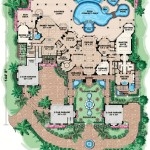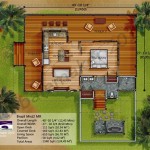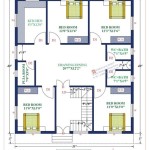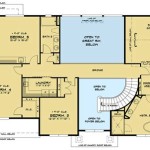Owl House Plans, or more commonly known as Barn Owl nest boxes, are a crucial tool in the field of conservation biology. These specialized structures, designed specifically for barn owls (Tyto alba), provide a safe and suitable nesting environment for these birds of prey.
The decline of natural nesting sites due to modern agricultural practices, habitat loss, and urbanization has made owl house plans an essential measure to support barn owl populations. By providing alternative nesting sites, these carefully crafted boxes help ensure the survival and reproductive success of these important predators in the ecosystem.
In the following article, we will explore the significance of owl house plans, discussing their design, placement, and maintenance. We will also delve into the conservation efforts surrounding barn owls and the role that these nesting structures play in the protection of this species.
Effective owl house plans consider several key factors to ensure the well-being and nesting success of barn owls.
- Appropriate dimensions
- Proper ventilation
- Predator protection
- Mounting height
- Nest substrate
- Orientation and location
- Weather resistance
- Ease of monitoring and maintenance
By carefully addressing these aspects, owl house plans can provide barn owls with a safe and suitable nesting environment, contributing to their conservation and population stability.
Appropriate dimensions
The dimensions of an owl house plan are crucial to ensure the comfort, safety, and nesting success of barn owls. The internal space should be large enough to accommodate the adult birds, their eggs, and growing chicks, while also allowing for proper air circulation. The following dimensions are generally recommended for barn owl house plans:
- Height: 24-36 inches (60-90 cm)
- Width: 18-24 inches (45-60 cm)
- Depth: 18-24 inches (45-60 cm)
- Entrance hole diameter: 6 inches (15 cm)
The entrance hole should be placed near the top of the box, approximately 6-12 inches (15-30 cm) from the top edge. This placement helps prevent predators from reaching the nest and provides the owls with a clear view of their surroundings.
It is important to note that slight variations in these dimensions can be acceptable, as long as the overall space and features of the owl house plan meet the needs of the barn owls.
Providing an appropriate nesting space through carefully considered dimensions is essential for the successful use and acceptance of owl house plans by barn owls.
Proper ventilation
Adequate ventilation is crucial for the health and well-being of barn owls nesting in owl house plans. Proper airflow helps regulate temperature and humidity levels within the nest box, preventing excessive heat buildup and condensation. This is especially important in warm climates and during hot summer months.
To ensure proper ventilation, owl house plans should incorporate the following features:
- Ventilation holes: Small ventilation holes should be placed near the top of the box, opposite the entrance hole. These holes allow warm air and moisture to escape, creating a natural airflow.
- Air gaps: Gaps between the floor of the box and the ground, as well as between the roof and the walls, allow for air circulation and prevent moisture buildup.
- Avoidance of solid floors: Solid floors can trap moisture and create an unhealthy environment for the owls. Instead, use a mesh or slatted floor that allows air to flow through.
Proper ventilation helps maintain a healthy environment for barn owls, reducing the risk of respiratory issues, heat stress, and other health problems. It also helps prevent the growth of mold and mildew, which can be harmful to both the owls and their eggs.
In addition to the above measures, it is important to avoid placing owl house plans in areas with poor air circulation or excessive moisture. By considering ventilation in the design and placement of owl house plans, we can ensure the well-being and nesting success of barn owls.
Predator protection
Predator protection is a crucial aspect of owl house plans, as barn owls are vulnerable to a variety of predators, including snakes, raccoons, opossums, and other birds of prey. To ensure the safety of the owls and their young, owl house plans should incorporate the following predator protection measures:
- Sturdy construction: Owl house plans should be made of durable materials, such as wood or metal, that can withstand potential attacks from predators. Avoid using flimsy materials that can be easily broken or torn.
- Metal predator guard: A metal predator guard can be installed around the entrance hole to prevent predators from reaching inside the nest box. The guard should be made of strong metal, such as galvanized steel, and should extend at least 6 inches (15 cm) away from the entrance hole.
- Smooth interior surfaces: The interior surfaces of the owl house plan should be smooth to prevent predators from climbing inside. Avoid using rough or textured surfaces that could provide footholds for predators.
- Placement: Owl house plans should be placed in areas that are not easily accessible to predators. Avoid placing them on low branches or near dense vegetation where predators can easily hide and ambush the owls.
By incorporating these predator protection measures, owl house plans can provide a safe and secure nesting environment for barn owls, reducing the risk of predation and increasing the chances of nesting success.
Mounting height
The mounting height of an owl house plan is a crucial factor that influences the safety, accessibility, and overall success of the nest box. Careful consideration should be given to the height at which the owl house plan is placed to optimize its effectiveness.
- Predator avoidance: Mounting the owl house plan at an appropriate height helps deter predators. Placing the box high off the ground reduces the risk of ground-based predators, such as snakes and raccoons, reaching the nest. It also makes the box less accessible to climbing predators, such as opossums and some birds of prey.
- Clear flight path: Barn owls need a clear flight path to and from the nest box. Mounting the box at a height that provides the owls with an unobstructed approach and departure route is essential. This helps prevent collisions with obstacles and reduces the risk of injury or predation during flight.
- Visibility and monitoring: A higher mounting height provides better visibility of the owl house plan, making it easier to monitor the nesting activity. This is beneficial for researchers and conservationists who need to observe the owls and their behavior without disturbing them.
- Weather protection: Mounting the owl house plan at a higher elevation offers some protection from adverse weather conditions. It helps keep the nest box drier during heavy rains and reduces the risk of flooding. Additionally, it provides better exposure to sunlight and air, which aids in ventilation and temperature regulation within the box.
The ideal mounting height for an owl house plan can vary depending on the specific location and environmental factors. Generally, it is recommended to mount the box at a height of 10-15 feet (3-4.5 meters) above the ground. This height provides a good balance between predator avoidance, flight accessibility, visibility, and weather protection.
Nest substrate
The nest substrate, or the material that lines the bottom of the owl house plan, plays a crucial role in providing a comfortable and suitable nesting environment for barn owls. The choice of nest substrate should consider the following factors:
Barn owls do not build elaborate nests like some other bird species. Instead, they rely on the nest substrate to provide insulation and warmth for their eggs and chicks. Suitable nest substrates should have good insulating properties to help regulate temperature within the nest box, especially during cold weather.
The nest substrate should be able to absorb and retain some moisture, creating a slightly humid environment that is beneficial for the eggs and chicks. However, it should not become waterlogged or moldy.
While the nest substrate should retain some moisture, it should also have good drainage properties to prevent water from accumulating at the bottom of the box. This helps keep the nest dry and prevents the growth of harmful bacteria and fungi.
The nest substrate should not pose any safety hazards to the owls. Avoid using materials that are sharp, toxic, or could entangle the owls or their young.
Commonly used nest substrates for owl house plans include:
- Wood chips: Wood chips, especially those made from softwoods like pine or cedar, provide good insulation and drainage. They are also relatively inexpensive and easy to obtain.
- Sawdust: Sawdust from untreated wood can be used as a nest substrate. It has good insulating properties and can help absorb moisture.
- Straw: Straw is a natural material that provides insulation and some moisture absorption. It is important to use clean, dry straw to avoid mold growth.
- Artificial nesting material: Commercially available artificial nesting materials specifically designed for owl house plans are also an option. These materials are typically made from recycled paper or wood fibers and provide good insulation and moisture control.
The depth of the nest substrate should be around 4-6 inches (10-15 cm) to provide sufficient insulation and cushioning for the eggs and chicks.
Orientation and location
When placing an owl house plan, careful consideration should be given to its orientation and location to optimize its effectiveness and provide the best possible nesting environment for barn owls.
Orientation: The orientation of the owl house plan refers to the direction in which the entrance hole faces. Ideally, the entrance hole should face away from prevailing winds and direct sunlight. This helps protect the owls and their young from harsh weather conditions and reduces the risk of overheating inside the nest box. In the Northern Hemisphere, it is generally recommended to orient the entrance hole towards the southeast or southwest to avoid cold north winds and excessive heat from the afternoon sun.
Location: The location of the owl house plan is equally important. It should be placed in an area that provides the owls with a clear flight path to and from the nest box. Avoid placing the box near obstacles or in areas with dense vegetation that could impede the owls’ flight. Additionally, the location should offer some protection from predators and human disturbance. Consider placing the owl house plan on a tall tree, barn, or other structure that is not easily accessible to ground-based predators.
Proximity to hunting grounds: Barn owls are nocturnal predators that primarily feed on rodents. When choosing a location for the owl house plan, consider placing it near areas where rodents are likely to be found, such as fields, meadows, or agricultural areas. This increases the chances of the owls successfully hunting and providing food for their young.
Avoidance of human disturbance: While it is beneficial to place the owl house plan in an area where the owls can easily find food, it is equally important to avoid placing it in areas with excessive human activity or noise. Barn owls are sensitive to disturbance and may abandon their nest if they feel threatened or uncomfortable. Choose a location that is relatively secluded and away from high-traffic areas or human settlements.
By sorgfltig considering the orientation and location of the owl house plan, you can provide the best possible nesting environment for barn owls, increasing their chances of successful breeding and contributing to the conservation of this important species.
Weather resistance
Weather resistance is a crucial factor to consider when designing and installing owl house plans. Barn owls, the primary occupants of these nest boxes, are exposed to various weather conditions throughout the year. Ensuring that the owl house plan can withstand these conditions is essential for the well-being and nesting success of the owls.
To achieve weather resistance, owl house plans should incorporate the following features:
- Durable materials: The materials used to construct the owl house plan should be durable and able to withstand exposure to sun, rain, wind, and extreme temperatures. Commonly used materials for owl house plans include wood (such as cedar or redwood), metal (such as galvanized steel), and plastic (such as high-density polyethylene).
- Proper construction: The owl house plan should be constructed with care and precision to ensure that it is weatherproof. Joints and seams should be sealed to prevent water leakage, and the roof should be designed to shed water effectively.
- Ventilation: Adequate ventilation is important to prevent moisture buildup inside the owl house plan. Ventilation holes or gaps should be incorporated to allow air to circulate and prevent condensation.
- Drainage: The owl house plan should be designed to allow water to drain away from the nest box. This can be achieved by providing drainage holes in the floor or by elevating the box off the ground.
By incorporating these features into the design and construction of owl house plans, we can ensure that these nest boxes provide a safe and dry shelter for barn owls, protecting them from the elements and contributing to their nesting success.
Ease of monitoring and maintenance
Owl house plans should consider ease of monitoring and maintenance to ensure the well-being of the owls and the longevity of the nest box. Regular monitoring and maintenance can help detect any issues early on, such as damage to the box or signs of predator activity, and allow for timely interventions.
- Inspection door: An inspection door or panel allows for easy access to the inside of the owl house plan for monitoring purposes. This door should be large enough to allow a researcher or caretaker to inspect the nest and the owls without causing undue disturbance. It should also be designed to minimize heat loss during inspections.
- Cleanout access: Owl house plans should incorporate a way to clean out the nest box regularly. This can be achieved through a removable floor or a hinged side panel. Regular cleaning helps remove old nesting material, droppings, and any debris that may accumulate over time, maintaining a clean and healthy environment for the owls.
- Predator monitoring: Owl house plans should be designed to allow for easy monitoring of predator activity. This can involve installing a camera near the nest box or regularly checking for signs of tampering or damage. Early detection of predator activity can help prevent nest failure and protect the owls.
- Durability and longevity: Owl house plans should be constructed to withstand the elements and last for several years with minimal maintenance. Using durable materials and proper construction techniques helps ensure the longevity of the nest box, reducing the need for frequent repairs or replacements.
By incorporating these features into the design and construction of owl house plans, we can facilitate regular monitoring and maintenance, helping to ensure the well-being of barn owls and the effectiveness of these nest boxes in conservation efforts.










Related Posts








